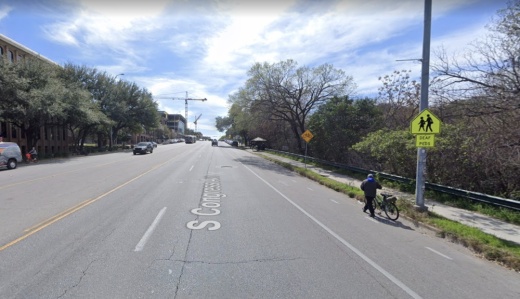In a Jan. 21 news release, city officials said parking in a bicycle-only lane is dangerous.
“[It] compels cyclists to enter general travel lanes, which greatly increases the chances of a deadly or serious crash,” Austin Transportation Director Robert Spillar said in the release. “Keeping our bike lanes clear makes our streets safer for both cyclists and motorists alike.”
Between October and January, Austin Transportation conducted a pilot program and issued about 70 violations for illegal parking in a bike lane and towed 17 vehicles, according to Jacob Barrett, public information specialist for Austin Transportation. He said in an email that the city aims to have two officers per shift dedicated to bike enforcement, and hiring for those positions is underway.
In an August post on Facebook, Austin Transportation wrote it installed “No parking” signs on South Congress Avenue after noticing more vehicles parked in the bicycle lane.
Residents who notice illegally parked vehicles may report them on the city’s 3-1-1 mobile app or by calling 311. The city can use data collected from 311 to identify hot spot problem areas and also dispatch an enforcement officer to issue citations and have illegally parked vehicles towed, according to Barrett. Fines for illegally parking in a bike lane can reach up to $300, and it costs $193 to retrieve an impounded vehicle, according to the city release.
Improving safety for all road users, including those in bicycles and scooters, is one of the goals of the city’s Vision Zero action plan, which outlines measures to achieve zero traffic-related fatalities and serious injuries. Austin Transportation also received feedback from the community about illegally parked vehicles in bike lanes, according to Barrett.
“This increased enforcement will allow bicyclists of all ages and abilities to enjoy our city’s bike network with less risk of being hit by a driver,” said Lewis Leff, transportation safety officer for Austin Transportation, in the release. “Providing bicyclists with clear lanes of travel also improves predictability and order on our transportation network, which makes our streets safer for everyone regardless of their mobility preference.”





